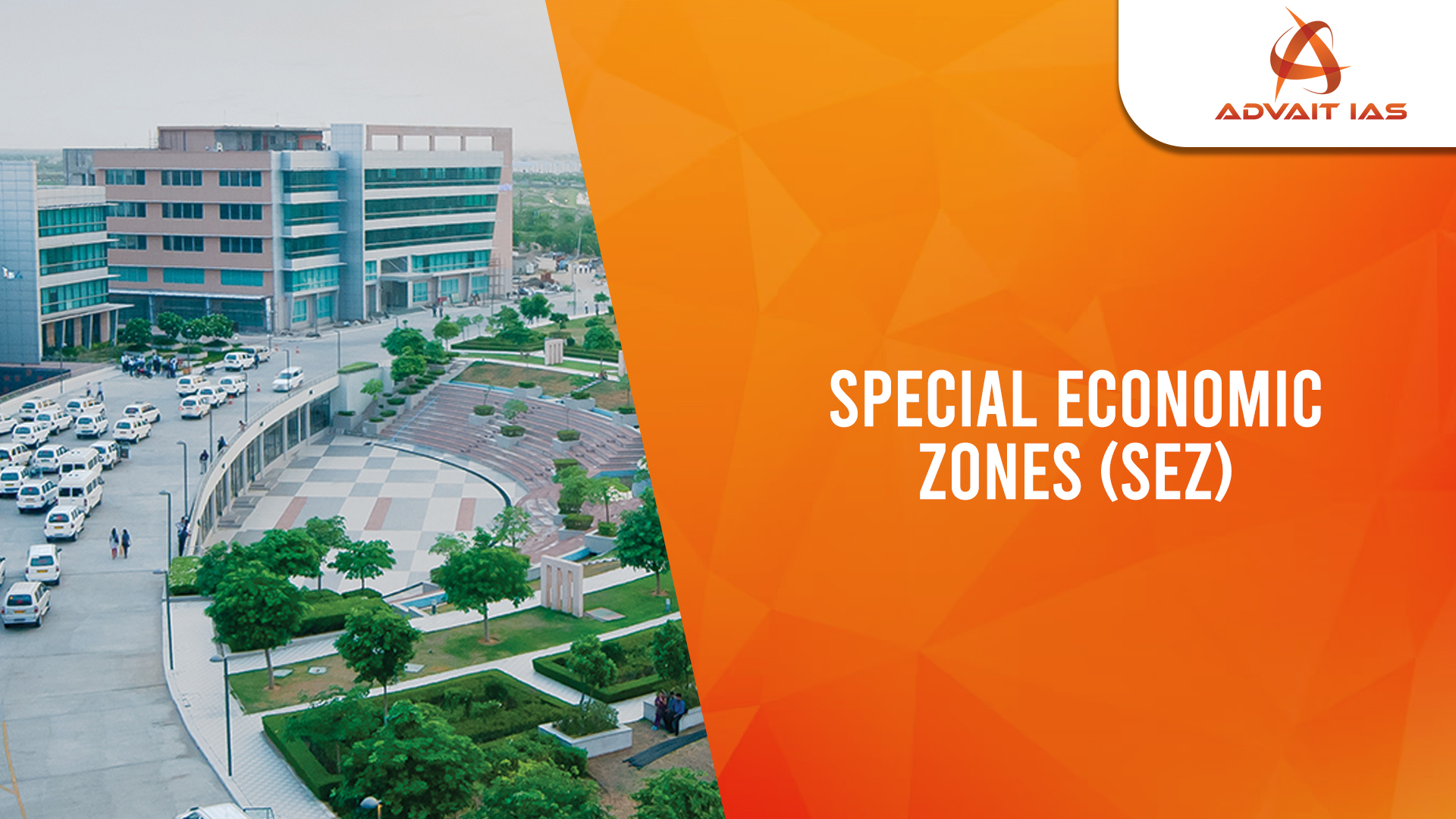The Ministry of Commerce & Industry has amended SEZ Rules, 2006 to:
- Encourage investment in semiconductors and electronics component
- Streamline operations in capital-intensive and high-gestation high-tech sectors.
- Major upcoming projects:
- Micron to develop a semiconductor SEZ in Sanand, Gujarat.
- Aequs Group to establish electronics component SEZ in Dharwad, Karnataka.
Key Changes in SEZ Rules (2024 Amendments):
- Land Requirement Reduced:
- From 50 hectares to 10 hectares for semiconductor and electronics SEZs.
- Relaxation of Land Encumbrance Rules:
- SEZ land can now be mortgaged or leased to government agencies; Board of Approval can waive encumbrance-free condition.
- Net Foreign Exchange (NFE) Relaxation:
- Free-of-cost goods can be included in NFE computation, improving performance metrics.
- Domestic Sales Allowed:
- Units may now supply to the Domestic Tariff Area (DTA) after paying applicable duties — reducing export-dependence.
What are SEZs?
- Definition: SEZs are treated as foreign territory for trade, taxation, and customs purposes.
- Governance: Established under the SEZ Act, 2005 and SEZ Rules, 2006.
- Policy Evolution: SEZs replaced Export Processing Zones (EPZs). The proposed DESH Bill, 2022 aims to transform them into Development Hubs.
- Types: Includes EPZ, Free Trade Zones (FTZs), Urban Enterprise Zones, etc.
- Current Stats:
- 276 operational SEZs in India.
- Export value (2023–24): USD 163.69 billion.
- Example: GIFT City, Gujarat.
Objectives of SEZs:
- Promote economic activity and exports.
- Generate employment and attract FDI.
- Improve infrastructure and enhance ease of doing business.
Incentives for SEZ Units:
- Duty-free imports for development.
- Tax exemptions (CST, Service Tax, etc.).
- Zero-rated supplies under IGST Act, 2017.
- Single-window clearance and liberal ECB norms (up to USD 500 million/year).
Challenges Faced by SEZs:
- Cost Competitiveness Declining:
- Due to rising input costs such as raw materials, energy, and logistics, which are significantly higher than in competing countries like China and Vietnam.
- OECD tax rules and WTO pressure reducing export-linked incentives.
- Land & Infra Bottlenecks:
- Land acquisition delays, poor connectivity, and inconsistent utilities.
- Compliance Burden:
- Multiple agencies, forex obligations, and compliance costs burden startups and R&D firms.
- Limited Domestic Market Access:
- High duties on DTA sales and unequal PLI competition.
- Underutilization:
- Large gaps between approved, notified, and operational SEZs.
- Some misused for real estate.
- Environmental Concerns:
- Pollution and resource depletion, weak enforcement of norms.
Baba Kalyani Committee (2018) Recommendations:
- Rename SEZs as 3Es – Employment & Economic Enclaves.
- De-link from NFE obligations, focus on investment and job creation.
- Create separate rules for manufacturing and services.
- Simplify compliance through integrated online systems.
- Invest in high-quality infrastructure and promote walk-to-work
Other Key Industrial Initiatives:
- NIMZ (National Investment and Manufacturing Zones):
- e.g., Prakasam (AP), Sangareddy (Telangana) under NMP 2011.
- Industrial Parks:
- Thematic parks with ready infra: e.g., Food Processing Parks.
- National Industrial Corridor Development Programme (NICDP):
- Smart cities and logistics hubs along 11 planned corridors.






